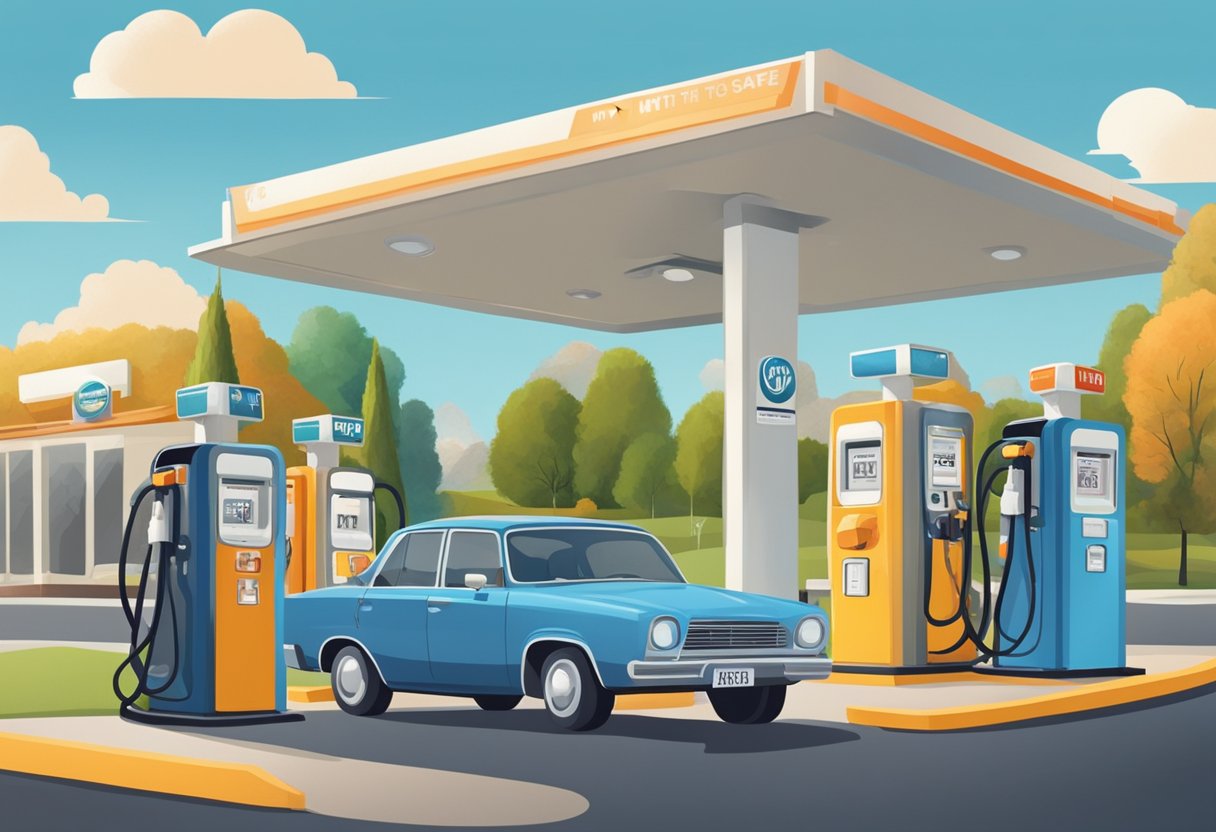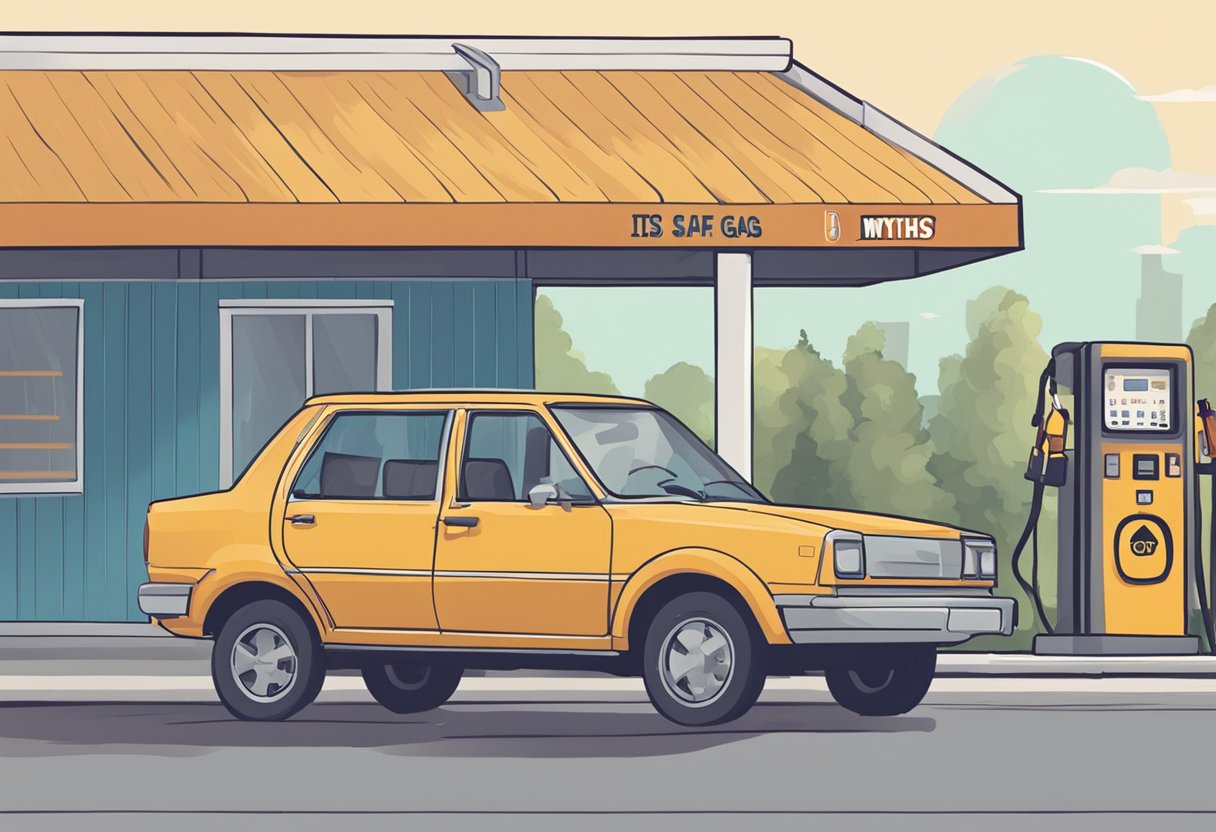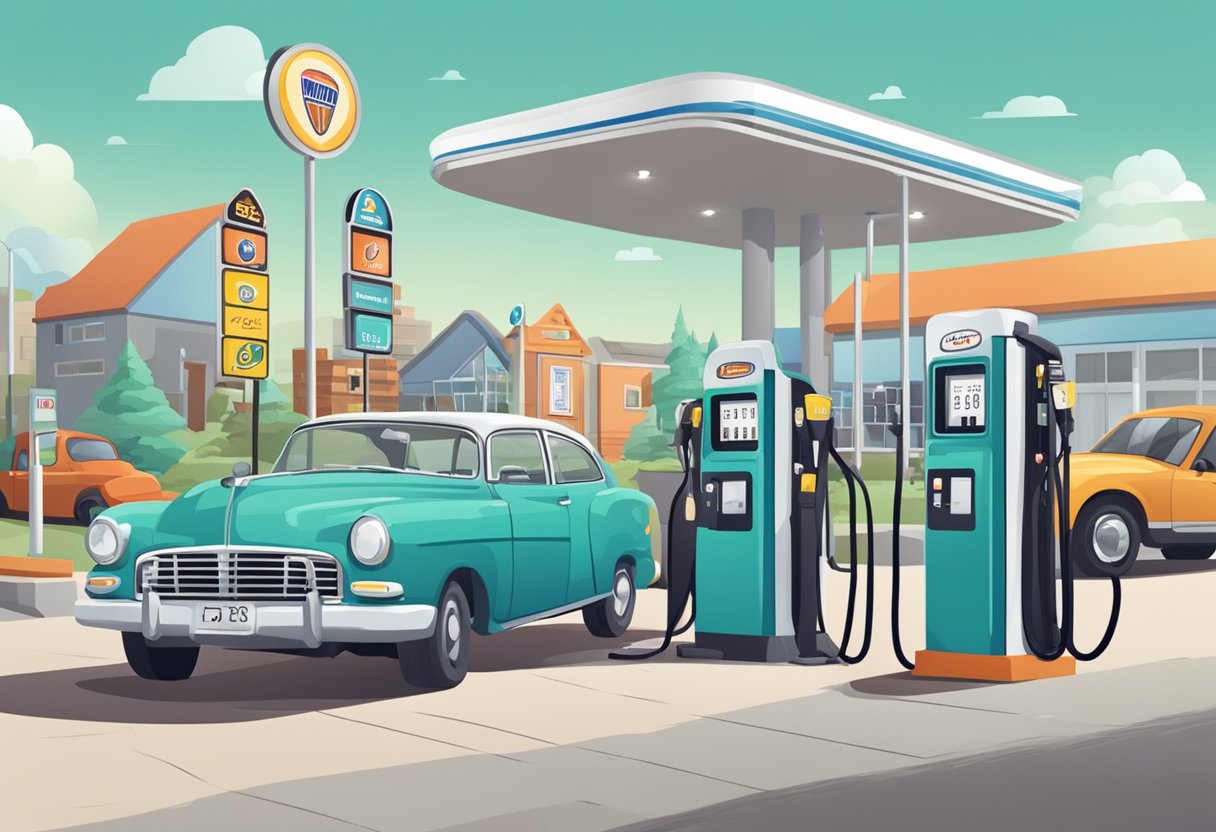When it comes to pumping gas, there are many myths and misconceptions that have circulated for years.
One of the most common questions asked is whether it is safe to pump gas with the car on.
Some people believe that leaving the engine running while filling up can cause a fire or explosion, while others think it’s perfectly fine.
In this article, we will debunk this myth and provide you with the facts.
Firstly, it’s important to understand how gasoline vapors can ignite.
Gasoline vapors are highly flammable and can ignite when exposed to an ignition source, such as a spark or flame.
This is why it’s important to turn off your engine and any other sources of ignition, such as your cell phone, when pumping gas.
However, the risk of a fire or explosion from pumping gas with your car on is actually quite low.
According to the National Fire Protection Association (NFPA), there have been very few incidents of fires or explosions at gas stations caused by cars with their engines running.
In fact, the NFPA states that the risk of a fire or explosion from static electricity is much higher than the risk from a running engine.
Nonetheless, it’s still important to follow safety guidelines and turn off your engine while pumping gas.
Understanding Car Ignition and Fuel Safety
Ignition System Basics
The ignition system is responsible for starting and maintaining the engine’s operation.
It consists of several components, including the battery, starter motor, spark plugs, and ignition coil.
When you turn the key in the ignition, the battery sends a current to the starter motor, which cranks the engine.
The spark plugs then ignite the fuel in the engine, which powers the car.
Fuel Dispensing Mechanics
When you pump gas, the fuel flows from the underground storage tank through the dispenser hose and into your car’s fuel tank.
The dispenser’s nozzle has a valve that opens when you squeeze the handle, allowing the fuel to flow.
When you release the handle, the valve closes, stopping the fuel flow.
Risks of Ignition During Fueling
Many people believe that leaving the car running while pumping gas can cause a fire or explosion. However, this is a myth.
Modern cars are designed with safety features that prevent accidental ignition during fueling.
The fuel tank is sealed and vented to prevent the buildup of flammable vapors.
The fuel pump and other electrical components are also designed to prevent sparks and other sources of ignition.
However, it is still important to follow basic safety guidelines when refueling your car.
For example, you should always turn off the engine and any auxiliary power sources, such as radios or air conditioners, before pumping gas.
You should also avoid smoking or using any open flames near the pump.
In conclusion, while there are risks associated with fueling your car, leaving the engine on is not one of them.
By following basic safety guidelines, you can safely pump gas and keep your car running smoothly.
Debunking Common Myths
There are many myths surrounding the act of pumping gas with your car on.
In this section, we will debunk some of the most common ones.
Static Electricity and Fuel Ignition
One of the most common myths is that static electricity can ignite fuel vapors while pumping gas with your car on.
However, this is not true. Modern gas pumps are designed with a grounding wire that is connected to the nozzle.
This wire safely channels any static electricity away from the fuel tank, eliminating the risk of a spark.
Engine Heat and Vapor Ignition
Another common myth is that the heat generated by your car’s engine can ignite fuel vapors while pumping gas.
While it is true that fuel vapors can ignite at temperatures as low as 45°F, the likelihood of this happening is extremely low.
This is because the fuel tank is designed to be airtight, preventing vapors from escaping.
Additionally, the fuel pump and fuel lines are located away from the engine, reducing the risk of heat transfer.
In conclusion, it is safe to pump gas with your car on as long as you follow basic safety precautions such as not smoking, turning off your engine if requested by the gas station, and avoiding using your phone.
By debunking these common myths, we hope to alleviate any concerns you may have about pumping gas with your car on.
Could Bad Valve Seals Lead to Potential Dangers While Pumping Gas with the Car On?
Yes, driving with bad valve seals can lead to potential dangers while pumping gas with the car on. Bad valve seals can cause oil to leak into the combustion chamber, leading to increased emissions and a risk of fire when pumping gas with the engine running. It’s important to address this issue promptly.
Safe Refueling Practices
When it comes to refueling your vehicle, there are some safe practices that you should follow to avoid any accidents or mishaps.
Here are some tips to keep in mind:
Turning Off the Engine
Before you start pumping gas, it’s important to turn off your engine.
This will prevent any sparks or flames from igniting the gasoline vapors that may be present around the pump.
So, make sure to turn off your engine and remove the keys from the ignition before you start refueling.
Avoiding Distractions at the Pump
While refueling, it’s important to avoid any distractions that may cause you to lose focus.
This includes using your phone, smoking, or leaving the pump unattended.
You should also avoid getting back into your vehicle while the gas is pumping, as this can create static electricity and increase the risk of a fire.
To ensure a safe and successful refueling experience, it’s important to follow these simple tips.
By doing so, you can avoid any potential accidents and keep yourself and others safe.
Emergency Response
In the unlikely event of an emergency, it’s important to know how to respond quickly and effectively to ensure your safety and the safety of others.
Here are some tips on how to handle a fuel fire and what gas station safety equipment to look for.
Handling a Fuel Fire
If you ever find yourself in a situation where a fuel fire breaks out at the gas station, remain calm and follow these steps:
- Immediately alert the gas station attendant and call 911.
- Turn off your car and any other vehicles nearby.
- Do not attempt to put out the fire yourself with water or anything else.
- Move away from the area and keep a safe distance until emergency responders arrive.
Remember, fuel fires can spread quickly and cause serious harm.
It’s important to prioritize your safety and let the professionals handle the situation.
Gas Station Safety Equipment
Gas stations are required to have certain safety equipment on hand to help prevent accidents and respond to emergencies.
Here are some items to look for:
- Fire extinguishers: Gas stations should have fire extinguishers readily available in case of a fuel fire.
- Emergency shut-off switches: These switches can be used to immediately stop the flow of fuel in case of an emergency.
- Spill containment systems: Gas stations should have systems in place to contain any spills that may occur during fueling.
By being aware of these safety measures, you can feel more confident and prepared when pumping gas.
Regulatory Standards and Recommendations
Industry Safety Protocols
Gas stations and fueling companies have implemented various safety protocols to ensure that fueling operations are conducted safely.
These protocols include safety guidelines for customers, training for employees, and regular equipment maintenance.
One such protocol is the requirement for gas station attendants to turn off the engine of the vehicle before fueling.
This is to prevent any potential ignition sources that may cause a fire or explosion.
Additionally, gas stations are required to have fire extinguishers and emergency shut-off valves in case of an emergency.
These measures help to ensure that fueling operations are conducted safely and minimize the risk of accidents.
Governmental Regulations on Fueling
The Occupational Safety and Health Administration (OSHA) has set forth regulations that govern the handling and storage of flammable liquids, including gasoline.
These regulations require that gas stations and fueling companies follow specific safety guidelines to ensure the safety of both customers and employees.
One such regulation is the requirement for gas station attendants to turn off the engine of the vehicle before fueling.
This regulation is in place to prevent any potential ignition sources that may cause a fire or explosion.
In addition, the Environmental Protection Agency (EPA) has set forth regulations that govern the emissions from vehicles and fueling operations.
These regulations require that gas stations use equipment that meets specific emissions standards and that they implement measures to minimize the release of volatile organic compounds (VOCs) into the atmosphere.
Overall, gas stations and fueling companies are required to follow strict safety guidelines and regulations to ensure that fueling operations are conducted safely.
It is important for customers to follow these guidelines as well to minimize the risk of accidents.
As an Amazon Associate we earn from qualifying purchases.
















Is it considered safe or advisable to start my car’s engine immediately after refueling, or should I wait for a few moments before doing so?